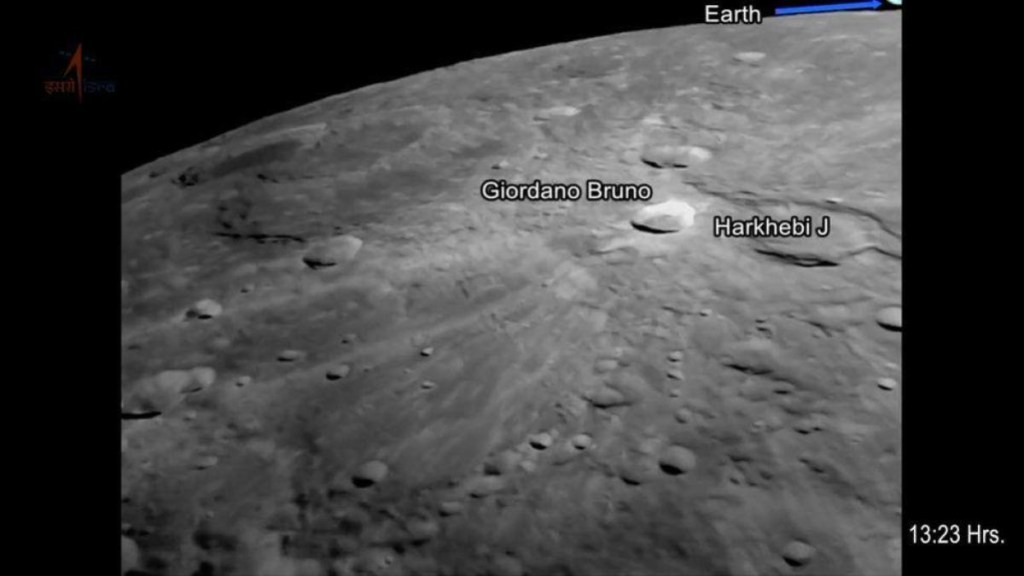Embarking on a cosmic photo adventure, ISRO unveiled a collection of lunar snapshots captured through the cameras perched upon Chandrayaan-3’s Lander Module. These images depict craters named ‘Fabry’, ‘Giordano Bruno’, and ‘Harkhebi J’, following the separation of the Lander from the Propulsion Module. The space agency shared the images on X (formerly Twitter) and said that the Lander Position Detection Camera (LPDC) captured visuals on August 15, while Lander Imager (LI) Camera-1 captured images on August 17, right after module separation. The Lander Module, housing Vikram (lander) and Pragyan (rover), will soon descend to a lunar orbit for a soft landing on the Moon’s southern pole on August 23.
The monochromatic snapshots unveil intricate details of lunar terrain, showcasing rocks, craters, and even a glimpse of the propulsion module on the Moon’s surface.
Chandrayaan-3 and Russia’s Luna-25 emerge as celestial travelers bound for the Moon’s southern realms, with anticipated landings in the upcoming week. Russia’s Luna-25 embarked on a historic voyage, marking the nation’s first lunar mission since 1976, during the Soviet Union era.
Launched recently, this mission is poised for a remarkable soft landing between the 21st and 22nd of August. A mere few days later, India’s Chandrayaan-3 aims for a similar lunar embrace. As these endeavors unfold, the competition for lunar touchpoints intensifies, with Chandrayaan-3 pursuing a commendable second place in reaching the coveted south pole.
Successful deboosting
The Vikram lander on Chandrayaan-3 underwent a critical deboosting manoeuvre today after successfully separating from the propulsion module a day before. The Indian Space Research Organisation on Friday took to X to announce that the deboosting manoeuvre was completed at around 4:00 pm.
“The Lander Module (LM) health is normal. LM successfully underwent a deboosting operation that reduced its orbit to 113 km x 157 km. The second deboosting operation is scheduled for August 20, 2023, around 0200 Hrs. IST,” said ISRO.

